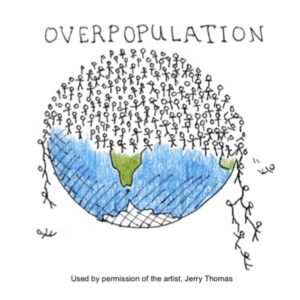 Environmental groups are only treating the symptoms of overpopulation
Environmental groups are only treating the symptoms of overpopulation
Several years ago a friend asked if I would be interested in helping start a population interest group in what became the Sierra Club’s SW Colorado Group. Today the Group is going strong, including leading discussions about possible new mining in the La Plata mountains, learning about the pros and cons of beavers and introducing a local organization that advocates for giving legal status to features of nature.
I remember when the national Sierra Club (SC) had a large, energetic Population Issues Committee. There was an active chat group where we traded information back and forth. Before then, SC published Anne and Paul Ehrlich’s classic book The Population Bomb. Past SC president, Carl Pope, used the term “most overpopulated nation” to describe the USA, acknowledging the huge footprint Americans leave on the environment.
What happened that the SC no longer seems concerned about human population? Journalist and Durango native, Kathleene Parker, may have part of the answer. She wrote that a 2004 Los Angeles Times article gave a clue to this change in policy.
At the end of the 1990s there was a tug-of-war in the SC’s board. People such as Dave Foreman pushed for a strong policy to limit immigration and population growth. Other members had a laisse faire attitude; they won the dispute. They were perhaps helped by a rich donor, David Gelbaum, who gave over $100 million to the SC. He wrote: “…that if they ever came out anti-immigration, they would never get a dollar from me.”
Personally, I am ambivalent about immigration, but passionate about slowing population growth voluntarily.
The current national SC Population Policy starts off stating: “The Sierra Club is a pro-choice organization that endorses comprehensive, voluntary reproductive health care for all. Sexual and reproductive health and rights are inalienable human rights that should be guaranteed for all people with no ulterior motive.”
This sounds pretty good. However, it further states: “This includes policies and positions made in the name of preventing ‘overpopulation’ by ideas and means that include, but are not limited to: zero-growth, population stabilization, family planning as climate mitigation, or promoting women’s empowerment or girls’ education as an indirect means to limit population growth.”
To me, this seems like an attempt to be politically correct by ignoring the basic cause of all the environmental problems that the SC tries to deal with. It is too late to “prevent” overpopulation; overpopulation is already attacking the integrity of our planet, our life support system. Three billion people, more or less, is the maximum human population that can be sustained without causing degradation of our environment. We are approaching 3 times that number!
In the USA we are consuming much more than is sustainable. Yes, consumption is a major factor; people often bring it up. I am tempted to ask these advocates of reduced consumption if their carbon footprint is 2 tons or less; this is what is considered to be sustainable. (The average carbon footprint of people in the US is 16 tons!) I know few people who are trying to consume less. However, I have met hundreds—no, thousands—of people who wish to have control over their family size. Slowing population growth is, indeed, the “low hanging fruit.”
The word “population” seems to be anathema to many people, perhaps because it goes against the biblical admonition “be fruitful and multiply”—and all the religious hang-ups about pronatalism and sexuality. Perhaps it brings up racial and genocidal disasters of the distant past—and also recent and near. We need to get over it and face up to the fact that “we have met the enemy and he is us”. And the more of us, the worse things will get.
©Richard Grossman MD, 2025
